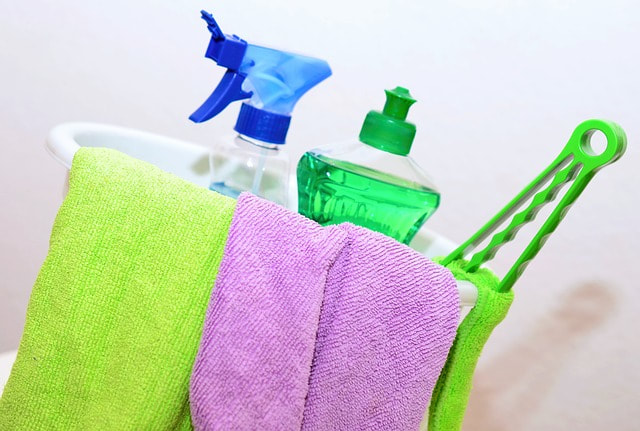Common Eye Injuries at Home & How to Prevent Them | Home Eye Safety & Eye Injury Prevention Month10/10/2017
When you’re performing everyday tasks at home, such as doing chores, your eye safety may not be the first thing that comes to mind. Accidents do happen though, and they can lead to various types of eye injuries, such as chemical burns, puncture wounds, or corneal scratches in one or both eyes. The severity of at-home eye injuries certainly varies. While some minor injuries may not cause serious or long-lasting problems, other more severe injuries can lead to permanent eye damage and even vision loss. While you don’t need to wear safety goggles at home at all times to prevent eye trauma, there are plenty of things you can do to decrease your risk of eye injuries in general and when undertaking certain activities. Common Causes of Eye Injuries at Home & How to Prevent ThemPrevention is your best medicine when it comes to avoiding eye injuries at home. The AAO, along with the American Society of Ocular Trauma, recommends that every household should have at least one pair of safety glasses approved by the American National Standards Institute. Those safety glasses should be in good shape, comfortable, and readily accessible when you need them. Additionally, being aware of the possible hazards allows you to take the precautions needed to keep your eyes protected. So with that, let’s take a look at some common causes of eye injuries at home and ways you can decrease your risk: Cooking Who doesn’t enjoy a good home-cooked meal? If you’re the chef, make sure you follow a few safety precautions to avoid injuring your eyes.
Cosmetics Cosmetics are often used to accentuate the eyes, but they can also lead to eye injuries. Eye injuries from tweezers, mascara wands, and hair dye are not uncommon. Here are some tips to protect your eyes from these potential trauma sources:
Cleaning With & Using Chemicals While cleaning may not be your favorite activity for other reasons, you don’t usually associate it with risk of eye injury. Injuries from cleaning can occur easily though. Fumes from chemicals can irritate eyes. More serious eye injuries can also occur if cleaning products splash into your eyes. Common cleaning products, such as oven cleaners and bleach, can lead to vision loss if they get into the eyes, so be extra careful when using harsh cleaners and chemicals. Other substances found around your home, such as pool chemicals and pesticides, can also be harmful and damaging if they get into your eyes. Before you decide you had better not risk it, and stop cleaning altogether, there are a few simple things you can do to protect your vision, including these tips:
Falls According to research conducted by John Hopkins University, and reported by the AAO, falls are one of the most common causes of eye injuries. Injuries from falls are especially common in adults over 60. To decrease the chances of taking a tumble and sustaining an eye injury, take the following precautions:
Bungee Cords Bungee cords are versatile and can be used to bundle items, hang things on walls, and secure open packages. Bungee cords can also lead to eye injuries if they snap back towards your face and eyes. Consider using alternatives to bungee cords, such as rope. If you do use a bungee cord, use the appropriate size cord for your task to decrease the chances it will snap back. If an Eye Injury Does Occur at HomeTaking some of the steps identified above may help you protect your eyes and vision at home. If you do suffer an eye injury though, even if you think it’s minor, please have it checked out by an eye doctor as soon as possible. Of course, if you think it might be severe, see an ophthalmologist immediately to minimize damage and your risk of vision loss.
Before you go any further, please visit our previous article in this series, Protecting Your Eyes During Home Improvement Projects, if you haven’t already, and be sure to read the section, “What to Do in Case of an Injury”. Of course, if you have any questions about eye safety, preventing eye injuries in and around your home, a current or past eye injury, or scheduling an appointment with one of our ophthalmologists, please call our office at 508-746-8600. We hope you’re finding our Home Eye Safety Month and Eye Injury Prevention Month articles valuable. Please check back with us soon for our next post on Preventing Eye Injuries at Work. Comments are closed.
|
EYE HEALTH BLOGCategories
All
Archives
April 2024
|
|
Kadrmas Eye Care New England
55 Commerce Way, Plymouth, MA 02360
14 Tobey Road, Wareham, MA 02571 133 Falmouth Road (Rt 28), Mashpee, MA 02649 |
Phone Number:
1-508-746-8600 Hours: Monday through Friday — 8 AM – 4:30 PM |


 RSS Feed
RSS Feed
